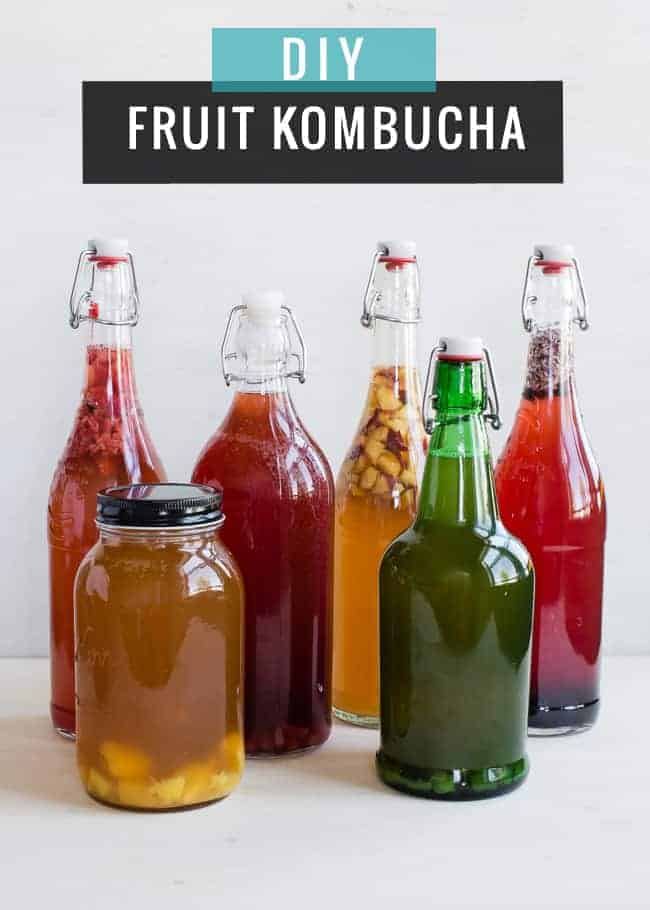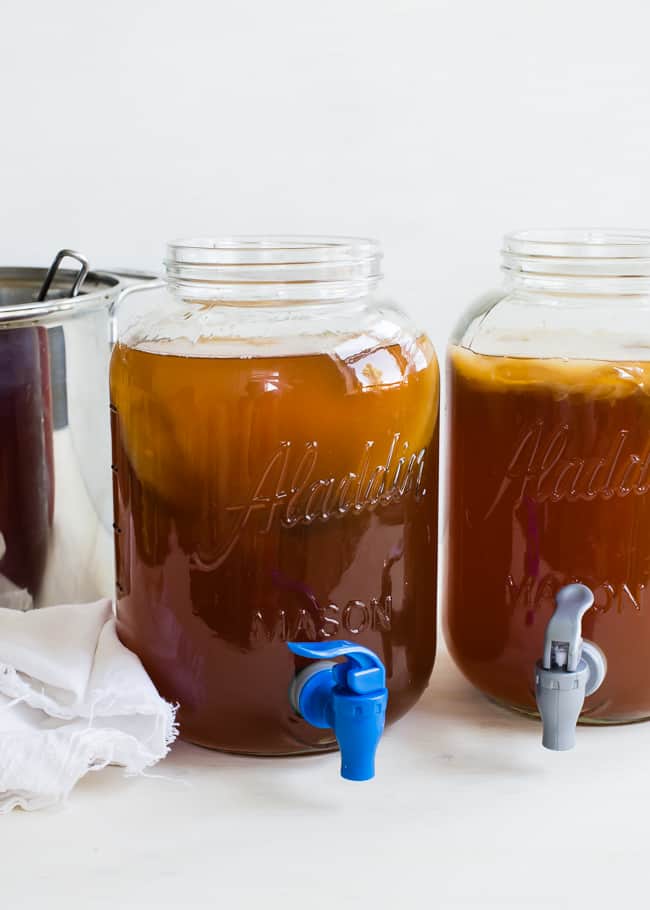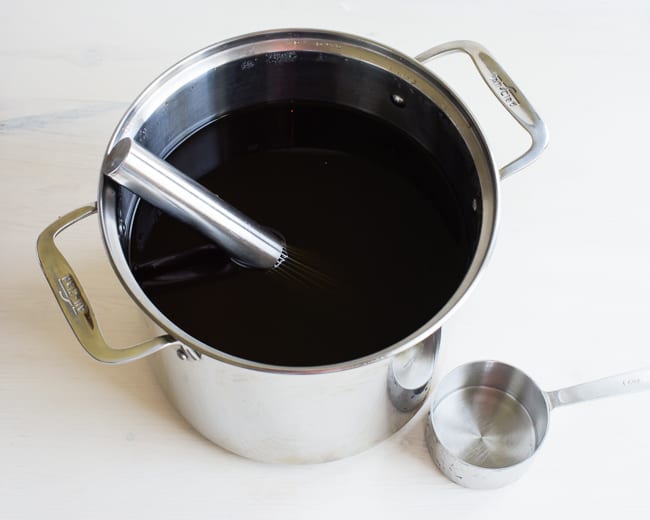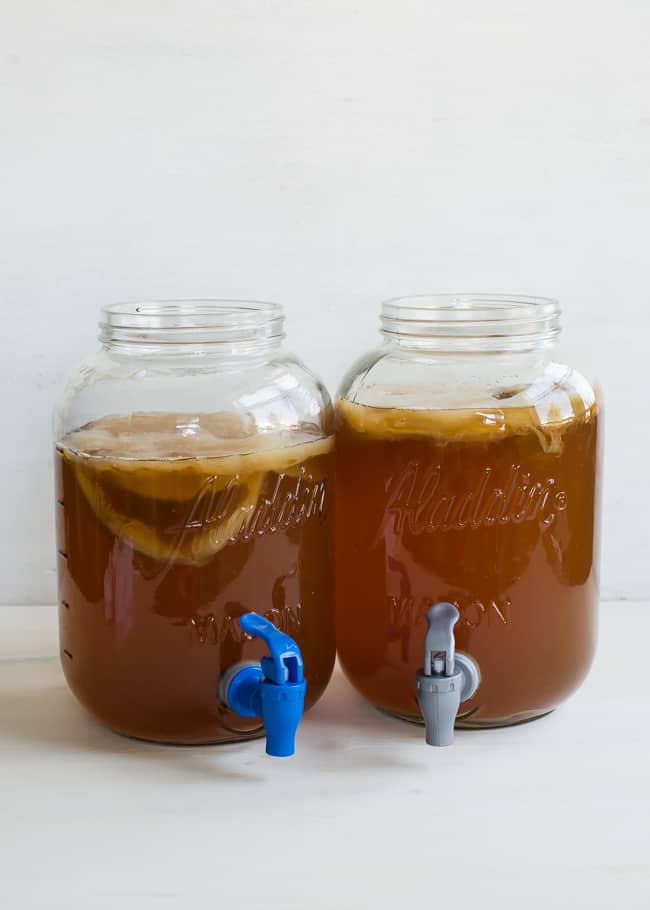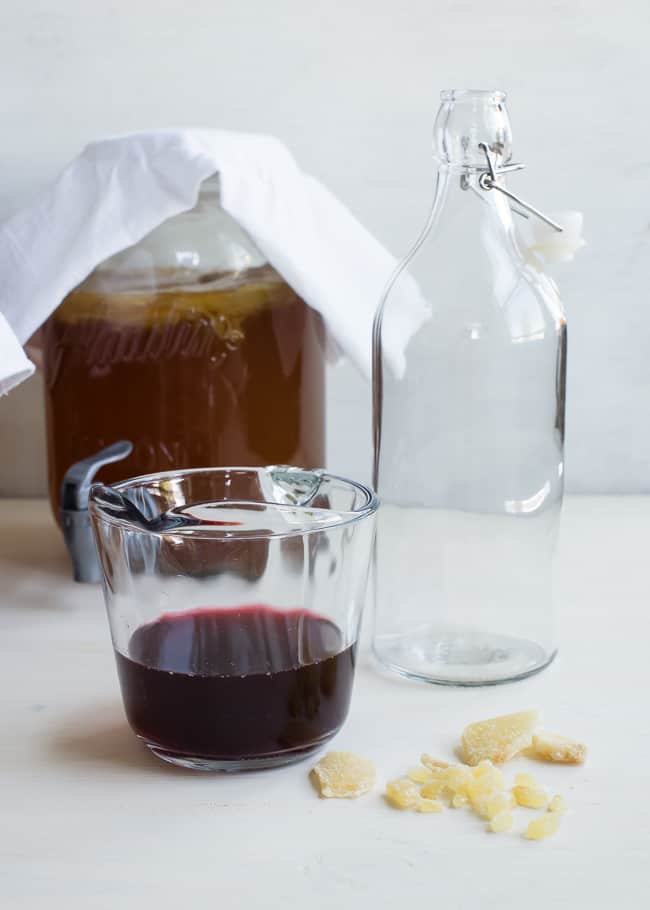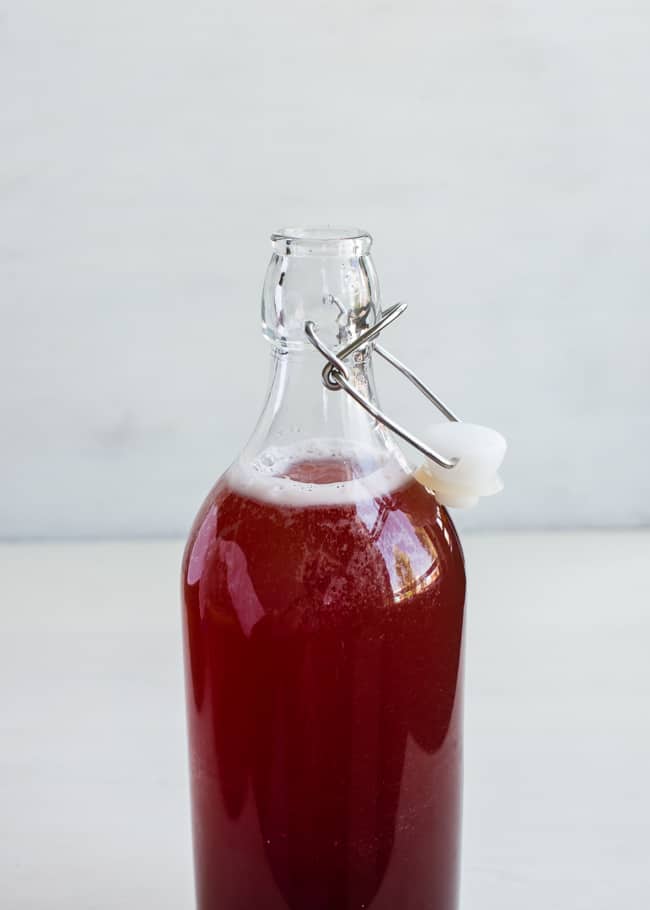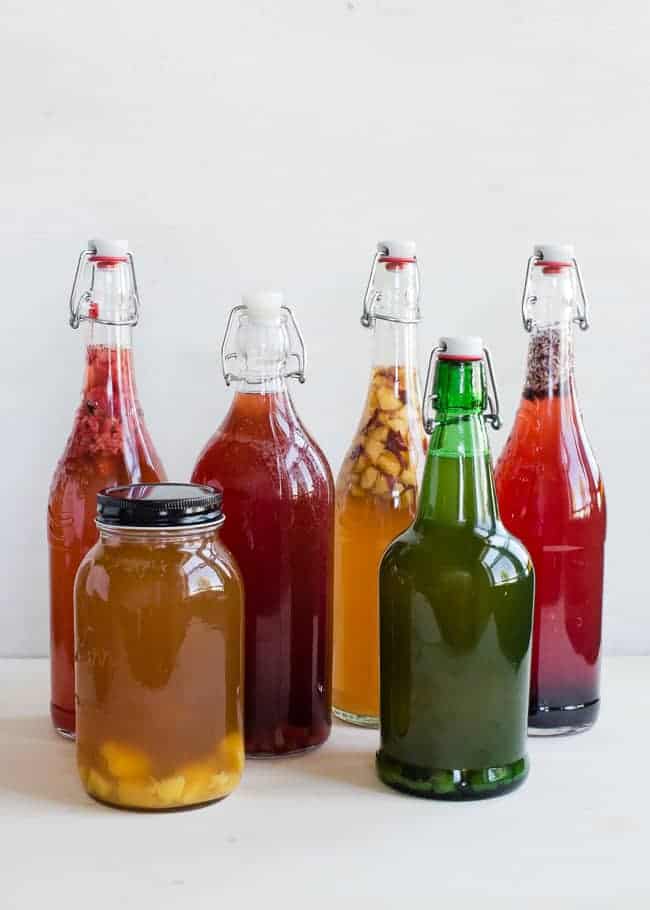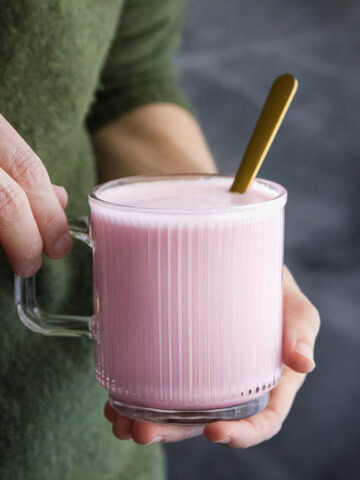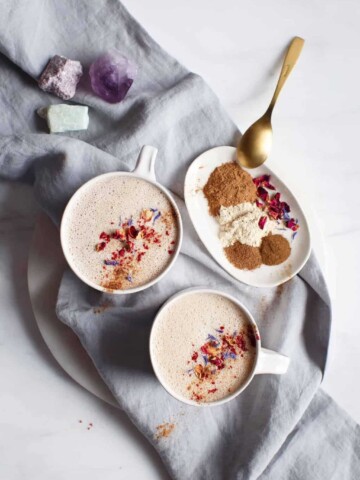It took me a very long time to try kombucha. To be honest, it sounded less than appetizing. Fermented tea? After hearing the term "kombucha mushroom" I was sure I was going to hate it. Surprise, turns out I'm a kombucha lover, and I also brew it at home. I use a simple continuous brew kombucha method. That means that I am always brewing a batch, so there are always a few bottles ready to go in my fridge.
Now, I know there are still some haters out there. And that's totally okay. But if you love kombucha like I do, read on to learn how you can save major $$ making your own kombucha at home.
What Is Kombucha?
Yes, it is fermented tea. To understand why you would want to drink that, let's talk about the kombucha fermentation process. You may have heard the term SCOBY (pronounced sko-bee). It's an acronym that stands for symbiotic culture of bacteria and yeast.
Kefir grains are a different kind of SCOBY that function in a similar manner. The strains of yeast and bacteria present in the SCOBY ferment the sugar in the tea and turn it into a probiotic-rich, effervescent beverage.
You need a SCOBY culture to start your own batch. A new "baby" SCOBY forms or grows on top of the "mother" SCOBY with each new batch. If you can find a friend willing to share, that's a great way to get started. Or you can order online from a reputable source, like Cultures for Health.
Kombucha Recipe Ingredients
For one gallon of kombucha tea, you will need:
—1 SCOBY
—2 cups raw kombucha (from a previous batch or purchased)
—13 cups filtered water
—8–10 bags tea (black, green, or white)
—1 cup sugar
It's important to use filtered water because you don't want anything from tap water to impede or change the brewing process. Things like chlorine in tap water are particularly harmful to the culture.
Using green, black, or white tea is also important for proper brewing. You can acclimate a SCOBY to brew from part herbal tea, but it takes a long time to do it. So I use half black and half green tea. If caffeine is a concern, use naturally decaffeinated teas.
I only use white granulated sugar or evaporated cane juice when brewing the tea. Remember, the culture uses the sugar to grow, and natural or raw sugars contain other nutrients that interfere with the fermentation process.
Some people have successfully used honey, but it can be tricky so I stick with sugar. Honey has its own enzymes and other nutrients that could interfere with the fermentation and flavor. Brown sugar, molasses, and other natural raw sugars should not be used in this capacity.
Kombucha Equipment
Use a large glass jar with a plastic spigot. It's much easier to fill the bottles. Metal spigots can errode, so plastic is preferred. Don't use plastic jars because microorganisms can hide in any scratches, and off flavors can develop. Glass is better.
Use glass bottles with swing top closures when bottling. Plastic bottles with tight-fitting lids or canning jars can also be used.
How To Make Continuous Brew Kombucha
Step 1 | Brew tea
Brew half the water (about 6-7 cups) with all of the tea bags. Add the remaining water cold to help cool down the tea, or it will take all day to cool down.
Step 2 | Add sugar
Add the sugar when the tea is hot so it will dissolve better.
When you start to brew, the tea should be room-temperature, not hot or cold. Temperature affects the SCOBY.
Step 3 | Ferment
Cover your jar with a thin towel, such as flour sack, or a paper towel or coffee filter to keep bugs like fruit flies out. Ferment in a dark area where the tea will be undisturbed.
pH strips can be purchased to help test the level of acidity to see if the kombucha is properly fermented, but you can also go by taste. It should be slightly sour, not overly sweet, and a bit fizzy.
Step 4 | Bottle and replace tea
The basic idea of continuous brew is that you take out fermented tea (now kombucha), leaving 2-4 cups of the old tea in the jar. Then replace that liquid with new tea. And the fermenting starts again.
Continous kombucha is done two ways:
Option 1: Take out a cup of kombucha and add a cup of new sweet tea. You can brew the sweet tea the night before, pour it into a measuring cup, and let it come to room temp overnight. In the morning, take out the same amount of kombucha and add the room temp tea.
Option 2: Draw off the entire supply after your preferred brew time (leaving about a 2-4 cups in the vessel). Then add new sweet tea and repeat.
Step 5 | Bottle + refrigerate
You can strain the kombucha to remove any strands of yeast, if desired. Then transfer to bottles and refrigerate.
In the fridge kombucha still slowly ferments, so when it starts to taste too vinegary it's time to toss it. But if you're drinking some each day, you’ll run out before you need to worry about it expiring.
Step 6 | Flavor kombucha with second fermentation
Flavoring the brew is pretty easy using a second fermentation.
That means I decant it into bottles with swing tops, add a little unsweetened 100% fruit juice or fresh fruit, and let it stand for 1 to 2 more days before refrigerating.
This second fermentation flavors the kombucha and makes it really fizzy, like soda. Just don't shake the bottles or they will bubble over!
How to flavor kombucha
Juice: Use 100% fruit juice. The typical ratio is about ⅕ juice of the bottle as juice and ⅘ kombucha. It's not exact; I just kind of eyeball it.
Fruit: Use about ¼ to ½ cup of fresh fruit per bottle, depending on the size. Diced fresh or frozen fruit will infuse enough flavor. I've tried using freeze-dried fruit but find that the kombucha is a little too sour, so I use fresh or frozen instead.
Herbs/flowers: Use dried herbs and flowers rather than fresh.
Ginger: I use candied ginger over fresh ginger. The extra sugar results in a little more fizz, and it really infuses the kombucha with a spicy ginger kick.
Or don't add anything ... I don't add flavor to every batch so that I can add things later (like chia seeds).
Kombucha Flavor Combinations
Some of my favorite flavor sare (back row, L to R):
—Raspberry-vanilla
—Cherry-ginger
—Nectarine-peach
—Blueberry-lavender
front row (L to R)
—Mango
—Ginger
Final Kombucha Brewing Tips
If the kombucha ever smells "off" or tastes too sour, it's better to toss it and brew a fresh batch. A SCOBY can vary in appearance, even from one batch of kombucha to the next. Dark spots and holes are normal.
Even though it rarely happens, mold can grow on the surface of the culture. It will appear in small spots that are fuzzy and white, green, and maybe orange. It will need to be thrown away and a new batch brewed with a new culture.
When the SCOBY becomes thick, the layers can be separated and shared. Separating them is also a good idea so that a large culture doesn't take up too much space in the jar.
Have you tried brewing kombucha? If you have any more questions or advice, please leave them in the comments!
354
